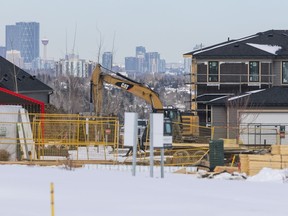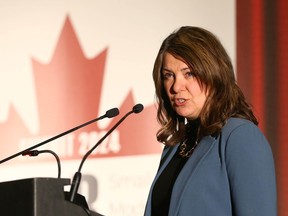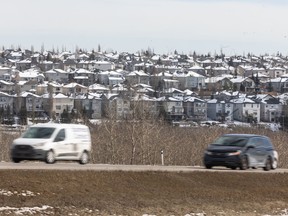Despite what the political rhetoric suggests, upzoning will allow our neighbourhoods to evolve slowly and naturally to enable more housing choices.

Article content
If you’ve been wondering what Alberta Premier Danielle Smith thinks of the issue of blanket rezoning in Calgary, she gave us a hint during her regular radio appearance this past weekend.
Advertisement 2
Article content
Her main beef related to the federal government inserting itself into civic matters by making upzoning a condition for cities to receive funds for housing. This is one of the cited reasons for a proposed law that would forbid municipalities and universities from signing deals with Ottawa without provincial consent.
Article content
She even expressed sympathy for civic officials now compelled to comply with federal terms in exchange for money for housing.
To be fair, the idea of slowing down growth around a city’s edges and diversifying the housing stock within existing urban footprints is hardly new. The feds appear to have merely hastened cities’ smarter growth objectives.
Leaving the discussion about intergovernmental relations to another day, let’s focus on Smith’s thoughts about housing itself.
Article content
Advertisement 3
Article content
People should be able to choose to live in the kind of neighbourhood that suits them, she said.
She stated a preference for mixed-use neighbourhoods due to convenient access to services but added it would be unfair to impose that on everyone.

But if we transpose that discussion into older residential-only neighbourhoods, which is what Calgary’s rezoning debate is about, what we mostly have now is a near-total absence of housing choice.
The vast majority of housing in low-density areas of most North American cities, including Calgary, is made up of single-family and sometimes semi-detached homes.
This is because decades years ago, leaders of the time decided this was the ideal way to build cities to accommodate a car-centric life.
Advertisement 4
Article content
As has been pointed out by others, this goes counter to the people-centric, fiscally sustainable patterns of growth cities had followed for centuries.
Currently, one practical side-effect is this: If someone was interested in the space provided by a single-family house but cared much less for yard work or gardening, the next best choice would likely be an apartment-style home, sometimes in a super-dense, high-rise setting.
There’s not much in between — the missing middle. For anyone in the situation, their housing choices have been unfairly made for them.
Calgary is already doing a great job at building better suburban communities, which offer a mix of single-family homes, semi-detached homes and row houses, none of which are particularly tall or particularly dense.
Advertisement 5
Article content
There’s no risk of that stopping, with city council having previously approved more greenfield development than city bureaucrats had recommended.
But mindful of the financial perils of endless expansion, cities are finally facing up to the fact post-Second World War-style suburban growth is fiscally unsustainable.
And while we will still need to grow at the edges, it would also be prudent to allow older neighbourhoods to develop naturally and gently over time, providing more housing options without having to continually stretch civic resources to accommodate ever-growing city limits.

Upzoning is not about transforming our cities overnight, despite what the political rhetoric on both sides would suggest, but about allowing them to evolve slowly, naturally.
Advertisement 6
Article content
To borrow from the premier’s verbiage, it’s about giving people more choice in housing type and location.
The following bears repeating: With Calgary’s proposed rezoning, there are limits on building height and minimum suite sizes. Apartment buildings are off the table completely. Parks are to be untouched. And there remains oversight for development that’s especially stringent for townhomes, according to the city’s documentation.
Nothing happens unless a homeowner chooses to building something to replace what’s already there, or sells to someone who wants to do likewise. Nothing is being imposed here.
By allowing low-density housing to be potentially replaced by slightly less low-density housing, blanket rezoning is nowhere near the dramatic change described even by Calgary itself.
Frankly, there would be less controversy if the city had more accurately and realistically framed what it planned to do.
Now, with just about a week before a public hearing on rezoning, Calgary officials find themselves waging a battle for public opinion partly of their own making.
Recommended from Editorial
Article content





